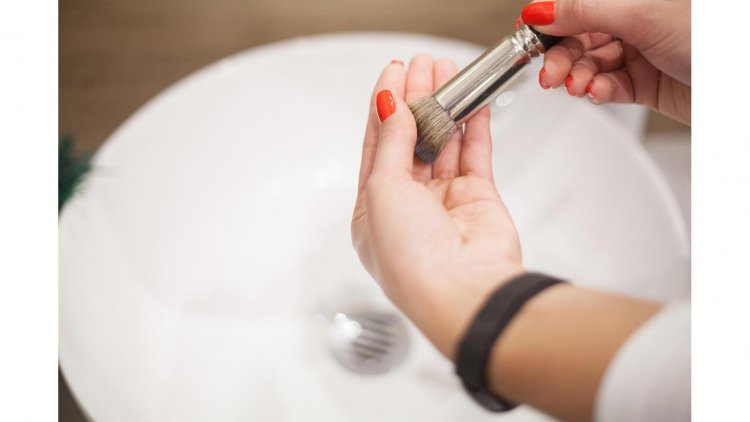The Ultimate Guide to Keeping Your Makeup Brushes Pristine and Bacteria-Free
Makeup brushes are indispensable tools in any beauty routine, allowing for flawless application and blending. However, keeping these brushes clean is essential not only for maintaining their performance but also for safeguarding your skin against bacteria and other potential contaminants. Regular cleaning ensures your brushes continue to deliver smooth, even application and prevents the build-up of harmful microorganisms that could lead to breakouts and infections. This comprehensive guide will walk you through every aspect of keeping your makeup brushes spotless and free from bacteria, offering practical tips, step-by-step cleaning techniques, and some useful insights into brush maintenance.

Why Clean Makeup Brushes?
The Risks of Dirty Brushes
Using unclean makeup brushes can introduce a host of issues. Bacteria, dead skin cells, and residual makeup can accumulate on brushes, providing a breeding ground for harmful microorganisms. These germs can lead to acne, skin irritation, and even eye infections. Furthermore, dirty brushes can compromise your makeup application by spreading uneven layers of product and contributing to patchy, streaky results.
Benefits of Regular Cleaning
Regularly cleaning your brushes has multiple benefits. Firstly, it ensures a more hygienic makeup application, which is crucial for maintaining healthy skin. Clean brushes also perform better, allowing for smoother application and better blending. Additionally, keeping your brushes clean prolongs their lifespan by preventing bristle damage and ensures that your makeup products go on as intended.
Essential Tools and Products for Brush Cleaning
Brush Cleaners and Shampoos
Investing in a high-quality brush cleaner or shampoo is key to maintaining brush hygiene. Brush cleaners are specially formulated to break down makeup residue and disinfect bristles. Look for products with antibacterial properties to ensure a thorough cleanse. For those who prefer a DIY approach, gentle baby shampoo or a mild facial cleanser can also be effective.
Cleaning Mats and Tools
A brush cleaning mat or pad can make the cleaning process more efficient. These mats feature textured surfaces designed to help agitate and remove makeup residues from bristles. Additionally, a brush cleaning tool, such as a small silicone scrubber or a brush egg, can provide extra scrubbing power and make the task less cumbersome.
Drying Racks
Proper drying is crucial to maintaining the shape and integrity of your brushes. A drying rack designed specifically for makeup brushes allows them to air dry in an optimal position, helping prevent bristle splaying and deformation. If you don’t have a dedicated brush rack, placing brushes on a clean towel with the bristles hanging off the edge can also work.
Step-by-Step Guide to Cleaning Your Makeup Brushes
Daily Cleaning Routine
- Disinfecting Spray: For a quick daily clean, use a brush disinfecting spray. These sprays are convenient for removing surface bacteria and residual makeup without the need for a full wash. Simply spray the solution on the bristles, gently wipe with a tissue or paper towel, and allow to dry.
- Spot Cleaning: Spot cleaning is an effective way to keep your brushes free from bacteria between deep cleans. Use a brush cleanser or mild soap, gently lather the bristles, and rinse under lukewarm water. Follow with a gentle squeeze to remove excess water and lay flat to dry.
Weekly Deep Cleaning
- Wet the Bristles: Begin by wetting the bristles of your brush under lukewarm water. Avoid soaking the entire brush head as this can loosen the glue and cause bristle shedding.
- Apply Cleanser: Apply a small amount of brush shampoo or cleaner to the wet bristles. Gently lather the cleanser into the bristles, working in circular motions to loosen and remove makeup residues and dirt.
- Rinse Thoroughly: Rinse the brush under lukewarm water, ensuring that all soap and makeup residues are completely washed out. It may be necessary to repeat the process if the water runs dirty.
- Reshape and Dry: Gently reshape the brush head with your fingers to restore its original form. Lay the brush flat on a clean towel or use a drying rack to let it air dry completely. Avoid standing the brushes upright while wet, as this can cause water to seep into the ferrule and weaken the glue.
Advanced Cleaning Techniques
Using Brush Cleansing Tools
Brush cleansing tools can streamline the cleaning process, especially for those with a large collection of brushes. A cleansing mat or glove provides a textured surface to thoroughly clean each bristle. Simply apply your cleanser to the mat, move the brush in circular motions, and rinse until clean. These tools also help prevent overworking your brushes, which can lead to bristle damage.
DIY Cleaning Solutions
For those who prefer natural solutions, homemade brush cleaners can be both effective and gentle. A mixture of equal parts water and white vinegar or rubbing alcohol can be used to disinfect brushes. Combine a few drops of essential oil like tea tree or lavender for added antibacterial properties. Shake the mixture well and use it similarly to commercial brush cleaners.
Brush Maintenance Tips
Proper Storage
Proper storage of your brushes is crucial to maintaining their shape and hygiene. Store brushes in a clean, dry place away from direct sunlight and moisture. Using a brush holder or a protective case helps keep bristles clean and prevents them from getting bent or damaged.
Regular Replacement
Even with meticulous cleaning, brushes do wear out over time. Replace brushes that show signs of fraying, shedding, or loss of shape. Regularly assess the condition of your brushes and invest in new ones as needed to ensure optimal performance.
Avoiding Common Mistakes
- Over-Wetting: Avoid soaking the entire brush head in water, as this can damage the glue and cause bristle shedding.
- Using Harsh Chemicals: Steer clear of strong solvents or harsh chemicals that can weaken bristles and irritate your skin.
- Inadequate Drying: Ensure brushes are thoroughly dried before storing them. Storing brushes while still damp can lead to mold growth and bristle damage.
Maintaining Your Brush Cleanliness Routine
Implementing a consistent cleaning schedule is the key to ensuring your makeup brushes remain in top condition. Daily spot cleaning combined with a weekly deep clean will help keep bacteria at bay and maintain the performance of your brushes. By incorporating these practices into your beauty routine, you'll enjoy better makeup application and healthier skin.
Additional Tips and Common Queries About Brush Hygiene
How Often Should You Clean Your Brushes?
The frequency of cleaning depends on how often you use your brushes and what type of makeup you apply. For daily makeup users, spot cleaning should be done daily, while a deeper clean should be performed once a week. Brushes used for liquid or cream products, such as foundation or concealer, may require more frequent cleaning compared to those used for powders.
Dealing with Different Types of Brushes
- Synthetic Brushes: These brushes are generally easier to clean and maintain because they don’t absorb products as much as natural bristles. Use gentle cleansers and avoid soaking them.
- Natural Hair Brushes: Brushes made from animal hair, like squirrel or pony, require more care. Use mild shampoos or brush cleaners and avoid using hot water, as it can damage the bristles and affect their performance.
Drying Techniques to Consider
Proper drying is crucial to maintaining the longevity of your brushes. Avoid using heat sources like hairdryers, which can damage the bristles. Instead, let your brushes air dry completely. If you need to speed up the drying process, use a fan to circulate air around the brushes. Ensure the brushes are laid flat to prevent water from seeping into the ferrule.
Addressing Brush Shedding
Brush shedding can be a sign of several issues, including poor-quality brushes, improper cleaning, or overuse. Regularly assess your brushes for signs of shedding and replace them if needed. If you notice excessive shedding, reconsider your cleaning technique and ensure you're not over-wetting or using harsh chemicals.
DIY vs. Commercial Cleaners
While commercial brush cleaners are convenient and formulated specifically for makeup brushes, DIY solutions can be just as effective and more cost-efficient. Homemade cleaners using mild soap, vinegar, or essential oils offer a natural alternative. Test different options to see what works best for your brushes and skin type.
Ensuring Hygiene Beyond Cleaning
Cleaning Your Brush Storage
It’s not enough to clean just the brushes; your brush storage needs attention too. Regularly clean brush holders or cases with disinfecting wipes or a mild cleanser. This practice prevents the buildup of bacteria and ensures your brushes stay hygienic.
Avoiding Cross-Contamination
To prevent cross-contamination, use separate brushes for different products, such as foundation and eye makeup. If you need to use the same brush for multiple products, ensure it is thoroughly cleaned between uses. This practice reduces the risk of transferring bacteria and product residue.
Recognizing When to Replace Brushes
Even with regular cleaning, brushes eventually need replacing. Signs that it’s time to invest in new brushes include fraying bristles, loss of shape, or persistent shedding. High-quality brushes can last longer with proper care, but no brush lasts forever.
Maintaining clean and bacteria-free makeup brushes is essential for both effective makeup application and healthy skin. By incorporating regular cleaning practices, using appropriate tools, and addressing common maintenance issues, you can prolong the life of your brushes and ensure they perform at their best. Proper brush hygiene not only enhances your makeup results but also prevents skin issues and infections. Adopting these practices as part of your beauty routine will help you enjoy flawless makeup application and healthier skin.
Disclaimer: The content shared on this blog is intended for informational purposes only. Consulting a professional about the highlighted information is recommended. The blog and its authors are not liable for any adverse effects or consequences resulting from the use of the methods or products provided. Always prioritize your health and safety.
What's Your Reaction?





















